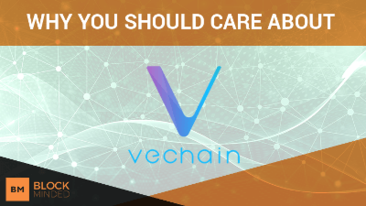Welcome to the Iota Cryptocurrency Review. Interested in investing in cryptocurrency? Be sure to take a look through our other crypto related material to get an edge!
Relevant Links
What Is The Goal Of The Iota Cryptocurrency Project?
Iota is different than most other blockchain and cryptocurrency projects in that it doesn’t use the Proof of Work or Proof of Stake consensus algorithms. Iota uses what is called the Tangle. The tangle requires each transaction to approve or verify 2 or more previously made transactions. In order to participate in the system each individual is required to do some work to approve transactions. This creates an environment in which transaction fees are not necessary.
The scalability of the Tangle is also very good. The more transactions that are being engaged in directly relates to the amount of approvers in the system. This means faster transaction approval times.
The Iota cryptocurrency is focusing on the growing Internet of Things ecosystem. Iota would make a great platform for machine to machine payments. Each machine in the environment would constitute a node within the Iota system. Each machine would be sending and receiving micro-payments on a consistent basis. And that would create a very robust ecosystem because each transactions would help secure the network.
Iota also has created a platform that is resistant to quantum computing. This might not matter now (because quantum computers don’t exist) but if and when quantum computers are created this will be important. Quantum computers are so powerful that they would be able to attack public blockchain networks like Bitcoin on a large scale.
Development and Management Team
David Sønstebø, Sergey Ivancheglo, Dominik Schiener, and Serguei Popov are the founders of the project. They act as senior advisers to the Iota Foundation and are active in leading the direction of the team.
David Sønstebo is from Norway. According to his LinkedIn profile he is a “serial entrepreneur with a passion for any kind of technology that can push human progress forward.” Before starting Iota he worked producing an ultra low-power processor for the IoT industry.
Sergey Ivancheglo, also know by the pseudonym Come-From-Beyond, has been involved in the development of blockchain applications for over 5 years. He is a co-founder of the NXT platform and is an integral part of the development of the Jinn processor. The Jinn processor is a computing chip that is more efficient than those existing today and is small enough to be incorporated in most or all IoT devices. It’s production is seen as an important step in Iota’s development and adoption.
Dominik Schiener is an entrepreneur that has close to four years experience in the blockchain and cryptocurrency space. His first project was called Filey. Him and his team attempted to create a marketing platform that connected advertisers and affiliates. From there he went on to find Bithaus which was a crypto to fiat exchange. The project ended in failure however.
Who Is Iota Partnered With?
Iota has done extremely well in aligning itself with major players in a variety of industries. The Iota project has become well known in the European blockchain and cryptoasset communities. This bodes well for the continuing development of the project. You can take a look at a list of known partnerships by clicking here.
Competitive Advantages and Risks
Competitors
The Iota cryptocurrency project doesn’t have many true competitors. They are one of the few projects that is solely focusing on the Internet of Things economy. But we also considered coins and projects whose value proposition focuses on micro payments.
- Nano
- Stellar
- Waltonchain
- Vechain
- IoT Chain
Competitive Advantages
- No transaction fees make Iota cryptocurrency ideal for micro-payments.
- Integration with internet of things devices will make for a more robust machine to machine payment ecosystem.
- Quantum proof algorithm may not be important now but it might matter a lot in the future.
Risks
Risk can hint at a project’s chances of ending in failure:
- The Iota cryptocurrency platform cannot execute smart contracts at this time. This could change in the future.
- Poor wallet experience reported by users. User experience should be paramount because it drives adoption.
- The network could potentially be more susceptible to attack if a lot of transactions are not taking place on the network.
Network and User Trends
Each platform has different features and that dictates the network and user trends we look at. The Iota platform doesn’t use a Proof of Work consensus algorithm and network hashrate and miner distribution are not applicable to our Iota review. Public addresses are only used once and this made it unreasonable to look at active user addresses.
The Iota cryptocurrency platform does not charge transaction fees because each user must work to validate transactions when engaging in a transaction themselves. The network will scale better when more transactions are being engaged in. This means that a transaction fee free environment will remain intact as more users participate in the network. This is in contrast to Bitcoin or Litecoin. As more users transact on these networks the transaction fees will inevitably increase. This is a good sign for Iota and this means that it can scale better than other platforms.
I took a look through the community’s social media pages and messaging platforms and I was impressed. The developers and other Iota team members are involved in answering questions and engaging users in conversation in an effort to improve the platform. This is a very promising signal. Long term community growth is key in increasing awareness of the platform.
In the course of constructing this Iota review I also came across this interesting article that analyzes the monthly growth of Iota transactions on the PayIota platform. Overall the growth over the last month has been fantastic. We can see that the amount of transactions has increased by close to 80% in the last month. But we need to keep in mind that activity on this particular platform doesn’t necessary reflect the activity on the Iota network as a whole. To learn more click here.
Conclusion
The Iota cryptocurrency project is extremely unique. First, the way transactions are approved on this platform is in stark contrast to other platforms. The Iota platform introduces a new way for transactions to be approved. Because individuals that want to engage in a transaction need to approve two or more transactions this platform has the potential to scale. Scalability of the networks that support cryptoassets has been a topic of debate in the community over the last few years. It seems the Iota team has solved this issue
The technology and the use case are very much in sync. The Iota platform is designed to support Internet of Things ecosystems and machine to machine payments. This is not meant to be a currency for everyday human use and investors should understand this.
The development team is solid but is not overly impressive. But the list of partnerships that the Iota foundation has put in place is promising. However, improvements still need to be made however. The wallet experience has been poor so far and this is concerning. Some development resources should be focusing on user experience. User experience is directly related to user adoption.
Smart contract integration is not native to the Iota platform. This is concerning because it could limit the functionalities of the platform. The team will need to understand if smart contract integration is necessary to remain competitive in this space.



